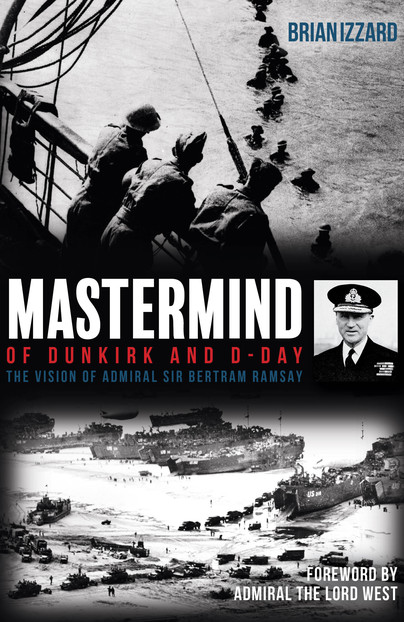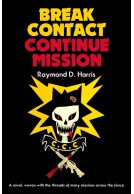Mastermind of Dunkirk and D-Day (Hardback)
The Vision of Admiral Sir Bertram Ramsay
Imprint: Casemate Publishers
Pages: 288
Illustrations: 30 images
ISBN: 9781612008387
Published: 15th March 2020
(click here for international delivery rates)
Need a currency converter? Check XE.com for live rates
This is the first major biography of Admiral Sir Bertram Ramsay in fifty years. Ramsay masterminded the evacuation of the British Expeditionary Force from Dunkirk in 1940. Initially, it was thought that 40,000 troops at most could be rescued. But Ramsay's planning and determination led to some 338,000 being brought back to fight another day, although the Royal Navy and the Merchant Navy paid a high price in ships and men. Ramsay continued to play a crucial role in the conduct of the Second World War – the invasion of Sicily in 1943 was successful in large part due to his vision, and he had a key role in the planning and execution of the D-Day invasion – coordinating and commanding the 7,000 ships that delivered the invasion force onto the beaches of Normandy.
After forty years in the Royal Navy he was forced to retire in 1938 after falling out with a future First Sea Lord but months later, with war looming, he was given a new post. However he was not reinstated on the Active List until April 1944, at which point he was promoted to Admiral and appointed Naval Commander-in-Chief for the D-Day naval expeditionary force. Dying in a mysterious air crash in 1945, Ramsay’s legacy has been remembered by the Royal Navy but his key role in the Allied victory has been widely forgotten. After the war ended his achievements ranked alongside those of Sir Winston Churchill, Field Marshal Viscount Alanbrooke, Field Marshal Viscount Montgomery and General Dwight Eisenhower, yet he never received the public recognition he deserved.
Brian Izzard’s new biography of Ramsay puts him and his work back centre-stage, arguing that Ramsay was the mastermind without whom the outcome of both Dunkirk and D-Day – and perhaps the entire war – could have been very different.
In a remarkable career, Sir Bertram Ramsey first joined the navy as a teenage cadet way back in 1898, before working his way up the navy's ranks.
History Book Chat
Described as a perfectionist, Ramsey had a firm set of values that he expected those around him to also keep. He also wasn't afraid to share his thoughts with the higher ranks of the service regarding how the navy should improve. This unsurprisingly did not go down particularly well, as readers will learn.
Whilst Commanding a ship he was known to be strict but alongside that, his fairness still made him a popular officer amongst his crews.
In personal letters to his then future wife, the men may have been rather surprised by a hidden softer side.
Famously remembered for his role in organising the Dunkirk evacuation, the book provides a day-by-day account through its most crucial days. Based in his headquarters under Dover Castle, he would share the stress he felt, along with those around him, in letters to his wife.
When the evacuation was over he would receive commendations and a knighthood, but he felt 'such a fraud' as it had all been been a group effort.
Ramsey continued to organise sea and air patrols for both Britain's defence and to attack enemy shipping.
More promotions would follow along with a move to Whitehall. Here he would be heavily involved with the planning for Operation Torch and Husky, the 1943 invasions of North Africa and Sicily, followed by Operation Overlord or D-Day the following year.
At the start of 1945 Ramsey was now based in France and had arranged a meeting with Field Marshall Montgomery at his headquarters at Brussels for the 2nd of January. The trip was to be made by air aboard a United States Army Air Force Hudson. Taking off at 11.15 am, it almost immediately stalled and crashed into the ground, killing all onboard. Bertram Ramsey was 61.
An enquiry would follow, led by his widow. It conclusion was pilot's error.
Sir Bertram Ramsey's remarkable career and wartime service clearly has left a legacy for generations to admire. Thankfully through enjoyable books like Brian Izzard's, we can all learn more about both the man and his life.
In a remarkable career, Sir Bertram Ramsey first joined the navy as a teenage cadet way back in 1898, before working his way up the navy's ranks.
Military Model Scene
Described as a perfectionist, Ramsey had a firm set of values that he expected those around him to also keep. He also wasn't afraid to share his thoughts with the higher ranks of the service regarding how the navy should improve. This unsurprisingly did not go down particularly well, as readers will learn.
Whilst Commanding a ship he was known to be strict but alongside that, his fairness still made him a popular officer amongst his crews.
In personal letters to his then future wife, the men may have been rather surprised by a hidden softer side.
Famously remembered for his role in organising the Dunkirk evacuation, the book provides a day-by-day account through its most crucial days. Based in his headquarters under Dover Castle, he would share the stress he felt, along with those around him, in letters to his wife.
When the evacuation was over he would receive commendations and a knighthood, but he felt 'such a fraud' as it had all been been a group effort.
Ramsey continued to organise sea and air patrols for both Britain's defence and to attack enemy shipping.
More promotions would follow along with a move to Whitehall. Here he would be heavily involved with the planning for Operation Torch and Husky, the 1943 invasions of North Africa and Sicily, followed by Operation Overlord or D-Day the following year.
At the start of 1945 Ramsey was now based in France and had arranged a meeting with Field Marshall Montgomery at his headquarters at Brussels for the 2nd of January. The trip was to be made by air aboard a United States Army Air Force Hudson. Taking off at 11.15 am, it almost immediately stalled and crashed into the ground, killing all onboard. Bertram Ramsey was 61.
An enquiry would follow, led by his widow. It conclusion was pilot's error.
Sir Bertram Ramsey's remarkable career and wartime service clearly has left a legacy for generations to admire. Thankfully through enjoyable books like Brian Izzard's, we can all learn more about both the man and his life.
In this year, the 80th anniversary of D-Day, it is fitting to remember one of the least known authors of that great event, who was also the man who commanded the evacuation of Dunkirk in 1940. In 1938, it looked as though his 40 year naval career was over. He had embarrassed a senior officer, and found himself due to be placed on the retired list, despite his excellent record to date. He had a reputation for getting the best out of his subordinates, and organising his team to produce the best results. However, things changed and he was nominated as Flag Officer in charge of Dover.
Paul Middleton MAFVA
As you might expect, there is a detailed biography of Ramsay’s early life and his career in the Royal Navy. His service in WW1 included commanding a monitor, and then the celebrated destroyer, HMS Broke. In both cases he felt the need to shake the crew up and improve the state of the ship. Post –War he saw a lot of the world cruising with Lord Jellicoe, this time on HMS New Zealand.
When war came again, Ramsay was organising his command at Dover, and improving the defences. This included ordering the construction of his headquarters in tunnels under Dover Castle, which became known as ‘Dumpy’, and is now open to the public. The descriptions of the events that followed, including the actions at Boulogne, Calais and Dunkirk are detailed, and make use of personal reminiscences. This adds a fresh layer to the story and adds to the read.
Individual actions, naming ships, captain’s and crew members, as well as the army personnel involved, are described in great depth to illustrate the desperate situation facing Ramsay. As always, he had an excellent team supporting him, and extra people were drafted in to help, although they were all dog-tired. In addition to the military matters, the author gives us the political events so we have the whole, albeit confused picture. When operation Dynamo was over, Ramsay relaxed with a game of golf, playing his best round ever. After a period of leave, he was knighted by the King, then back to the business of preparing defence.
The war for Ramsay continued with involvement in countering the Channel Dash, and later with Operation Torch, where he encountered the challenges of working with the Americans. After that Ramsay played a major role in Husky, the invasion of Sicily, and as with the rest of the book, there is an amazing amount of detail on every aspect of the planning, personalities and events, many of which I do not recall seeing in print before. Next came Overlord, the invasion of Normandy, and was the largest amphibious operation of the war. Ramsay was selected to be the senior allied naval officer, a role for which he was perfectly suited. Planning for D-Day was long and arduous, and was the pinnacle of Ramsay’s career. Again, the book is full of detail, and the snippets of personal stories make for a fascinating read. Description of D-Day itself continues in the same style, and reinforces the old adage that “Planning seldom survives contact with the enemy”. However, for the most part, the operation went according to the plans developed by Ramsay and his team. I should also mention the extracts from Ramsay’s letters to his wife, which add to the character of the man. One error is a reference to the use of Valentine DD tanks, when it should be Shermans. Valentine DDs were only used for training.
After involvement with the campaign to clear the Scheldt estuary there came the @Battle of the Bulge’, but on the second of January, he was in a plane crash, so did not see a conclusion to all his valuable work.
The appendices list promotions and the ships he served on, his awards, a list of vessel types in Operation Dynamo, names of ships lost in Dynamo, and ship types used in Neptune.
A great read, recommended.
This excellent biography goes a long way toward ensuring the admiral and his achievements are more widely known.
David Saunders, Military History















